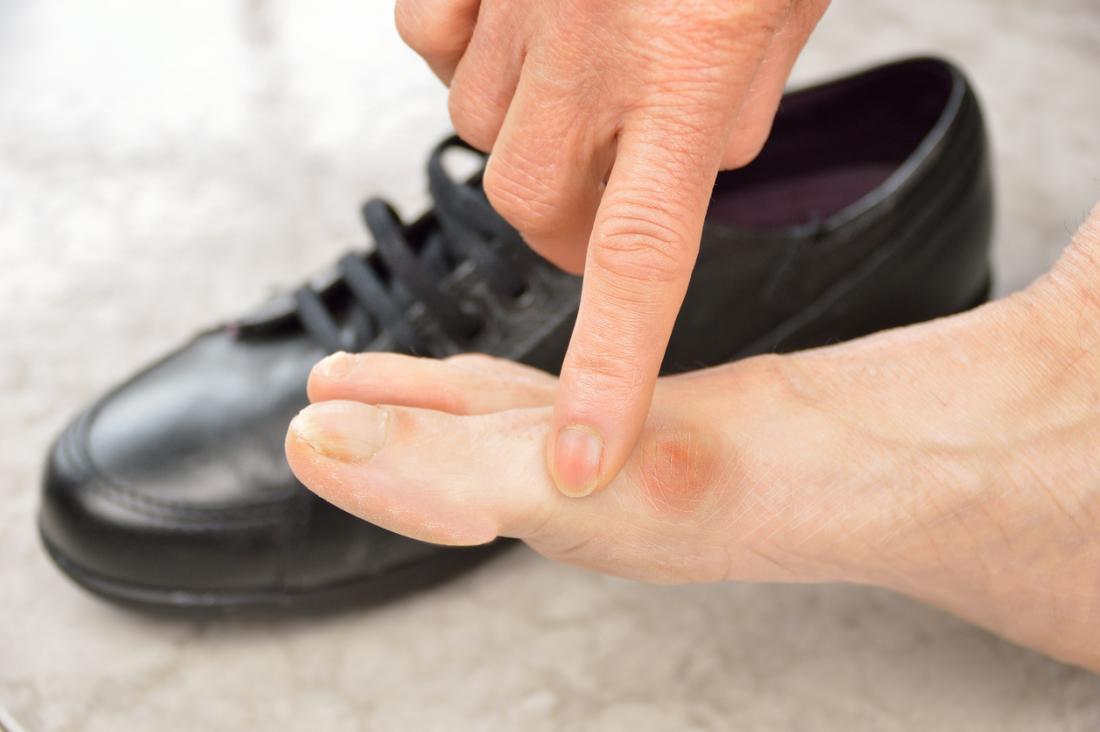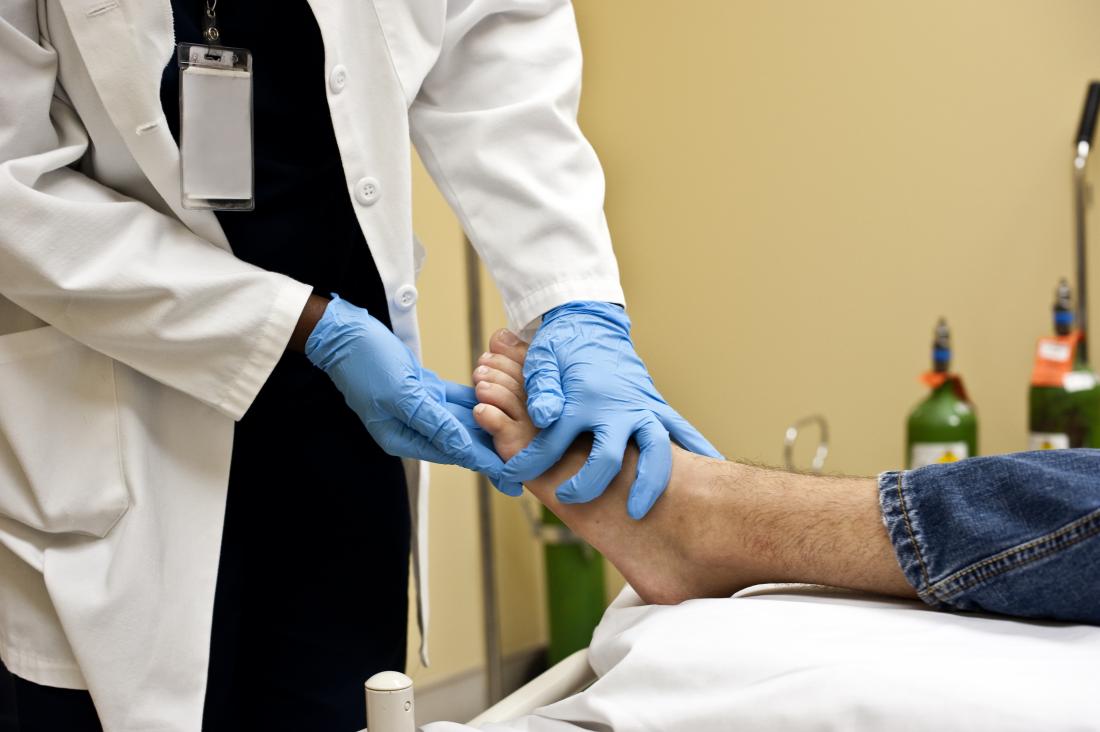Numbness can feel different to different people. The sensation may also vary, depending on what is causing it. When a person feels numbness in the toes, they may experience:
- a tingling feeling
- a pins and needles sensation
- an inability to feel touch, heat, or cold
There are many causes of numbness in the toes. Some people find that it goes away if they change shoes or avoid exposure to cold conditions.
In other cases, numbness may be due to a medical condition that requires treatment, such as diabetes, peripheral artery disease (PAD), or multiple sclerosis (MS).
It is important to find out the cause of toe numbness and have treatment if it is necessary.
This article looks at what causes numbness in the toes, possible treatments, and when to see a doctor.
What causes numbness in toes?
There are many reasons for numbness in the toes, ranging from minor to severe. People can speak to a doctor if toe numbness does not go away on its own or has no obvious cause.
The following are some of the reasons a person may experience numbness in their toes.
Tight footwear

Tight footwear is a possible cause of numbness in the toes.
Wearing tight shoes can cut off circulation in the toes, which can cause tingling and numbness.
Similarly, wearing a tight cast or wrap for a foot injury can interfere with proper circulation to the toes.
Check that shoes are the proper size and width. If a person needs a cast or other protection for a foot injury, they should make sure they can still feel their toes with the cast or wrap in place.
Heavy exercise
Running or walking for extended periods can temporarily cause numbness in the toes and feet. This numbness should subside after stopping the exercise.
Wearing properly fitting footwear may minimize numbness from exercise. The American Academy of Podiatric Sports Medicine recommend replacing walking shoes every 300–500 miles or before they start to look worn.
Exposure to cold
Being outside in cold weather, especially if the feet become wet, can cause numbness in the toes.
If a person notices toe numbness in cold weather, they should go inside to warm up. Exposure to extreme cold can lead to frostbite, which can cause permanent tissue damage, and lead to amputation.
Going barefoot in a cold house or building can also cause temporary numbness that should subside when the toes are warm again. Wearing thick socks or slippers indoors can help to warm up cold feet.
Raynaud’s phenomenon
Raynaud’s phenomenon happens when a person’s blood vessels respond too strongly to cold and stress. Usually, the condition affects the blood vessels in the fingers and toes, causing:
People who have Raynaud’s may find that keeping the body warm can help prevent symptoms. In more severe cases, a person may need medication.
Bunions

A person with a bunion should wear footwear that is the correct width and size.
A bunion is a bony bump that grows at the base of the big toe.
People may get bunions if they wear tight, narrow shoes that push the big toe inward. Over time, this pressure causes bone deformity.
A bunion may make it difficult to find shoes that fit correctly. Shoes may be too tight in the toe area, leading to numbness.
People who have a bunion should see a foot and ankle specialist and wear footwear that is the proper width and size to avoid pressure or discomfort.
Broken toe
A toe fracture, or a broken toe, can cause numbness or tingling. Broken toes often happen when a person has an accident, fall, or hits their toe on a hard object.
A person should see a doctor if they injure their toe and are experiencing numbness. A broken toe may require treatment to ensure the bone heals properly.
Morton’s neuroma
Morton’s neuroma is a thickening of tissue around one of the nerves in the ball of the foot. It can cause burning and numbness in the feet and toes. It may also feel like there is a pebble or other object under the foot.
The American Academy of Orthopedic Surgeons say 80% of people with Morton’s Neuroma can find relief with a combination of the following:
- wearing wider, nontight shoes and avoiding high heels
- using customized shoe inserts and pads that relieve pressure on the nerve
- having steroid injections that reduce swelling and inflammation
People who participate in high impact sports, such as running, may find that taking a break can help relieve Morton’s neuroma. They may wish to try a low impact activity, such as swimming, to help the foot heal.
If the above do not bring relief, a doctor may recommend surgery to relieve pressure on the nerve.
Diabetes
One of the complications of diabetes is a condition called diabetic neuropathy.
Diabetic neuropathy can happen when high blood sugar levels damage nerves, causing numbness and tingling in the toes and feet.
People who have diabetes should check their feet daily and work with their healthcare providers to keep blood sugar under control. They should also avoid going barefoot and wear properly fitting shoes.
Peripheral artery disease
PAD is also known as peripheral vascular disease (PVD) or hardening of the arteries. It affects more than 10 million people in the United States, according to the Society for Vascular Surgery.
PAD happens when deposits known as plaque buildup in the arteries. Plaque buildup reduces blood flow and can cause pain, weakness, and numbness in the legs or feet. People may get PAD from high blood pressure or unhealthy cholesterol levels. Diabetes can also cause PAD.
Doctors usually recommend exercise, a more healthful diet, and not smoking to control PAD. In some cases, people may need medications or surgery.
Multiple sclerosis
MS is a chronic disease that affects the brain and spinal cord, causing a disruption of signals to and from the brain.
MS causes several symptoms, including numbness and tingling, in various parts of the body. It can also cause difficulty with walking, vision problems, mental changes, and many other symptoms.
If a person thinks they may have symptoms of MS, they should see their doctor for the correct treatment.
Chemotherapy
Chemotherapy can be a lifesaving treatment for cancer. It may cause side effects, including numbness and tingling in certain parts of the body.
People should speak with their healthcare provider about any side effects of chemotherapy.
Spinal cord injury
The spinal cord is responsible for sending nerve messages through the body. Spinal cord injuries could be caused by:
- vehicle accidents
- severe blows to the back or body
- arthritis
- cancer
A spinal cord injury can cause numbness in the toes or the inability to feel heat or touch. The damage may not always be obvious at first.
A person must see a doctor after any severe trauma to the head, neck, or back. If someone is involved in an accident and their brain or spinal cord may be hurt, it is essential not to try to move the individual and to call the emergency services.
Vitamin B-12 deficiency
When a person does not get enough vitamin B-12, they may develop pernicious anemia. When this happens, the body is unable to make enough red blood cells.
Without enough red blood cells, a person may feel weak or tired. They may also have nerve problems, including numbness.
Doctors can treat pernicious anemia with vitamin B-12 injections.
Animal foods, including meat and dairy, contain vitamin B-12. Vegans may be at a higher risk of vitamin B-12 deficiency unless they manage their nutrient intake carefully.
Stroke
A stroke is an interruption in blood supply to the brain and is a life threatening emergency.
After a person has had a stroke, they may notice residual symptoms such as numbness or being unable to feel cold or pain. These symptoms may be a sign of nerve damage.
People may need rehabilitation after a stroke to help them regain normal activity and function.
Vasculitis
Vasculitis is an autoimmune disease. It happens when the immune system attacks healthy blood vessels. Several diseases and illnesses can cause vasculitis, including:
Because vasculitis can interfere with blood flow, it can cause numbness and tingling. Treatment depends on what is causing the condition.
Sometimes, treating the illness that caused vasculitis will help relieve symptoms. In other cases, doctors may prescribe steroids or other medicines to lower inflammation in the blood vessels.
Guillain-Barre syndrome
Guillain-Barre syndrome is a rare illness when the immune system attacks the nerves in the body. Certain viruses and conditions can trigger Guillain-Barre syndrome, but the cause is often unknown.
One of the first symptoms of Guillain-Barre is numbness and tingling in the toes, fingers, wrists, or ankles. The numbness may start to spread and move up the body. It can also cause widespread weakness, difficulty speaking, and other coordination problems.
People who have symptoms of Guillain-Barre syndrome may need medical tests to get a diagnosis. They may require treatment in a hospital and rehabilitation afterward. When a person has symptoms of Guillain-Barre, immediate medical care is needed.
Guillain-Barre syndrome is a serious condition with a mortality rate of between 3–7%. It can also lead to persistent weakness and disability over time. However, with intensive treatment, 70% of people who get Guillain-Barre will recover.
When to see a doctor

People should talk to their doctor if their toe numbness has no apparent cause.
Many people find relief from numbness in toes with different shoes, rest, or warmth.
If numbness in the toes happens without an apparent cause or does not go away, a person can see their doctor for an assessment.
A doctor may ask about symptoms, any current health conditions, and medications and supplements that someone may be taking. Getting to the root cause of the numbness is the first step toward successful treatment.
Outlook
Numbness in the toes is not a disease but is a symptom of something else. A doctor will need to determine the underlying cause to treat toe numbness and any other related symptoms.
People should not ignore toe numbness. Though it is often harmless, it can be a sign of a health problem. Working with a doctor gives the best chance of dealing with any problem.
